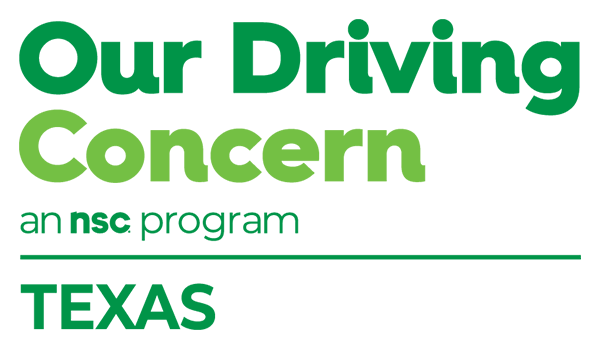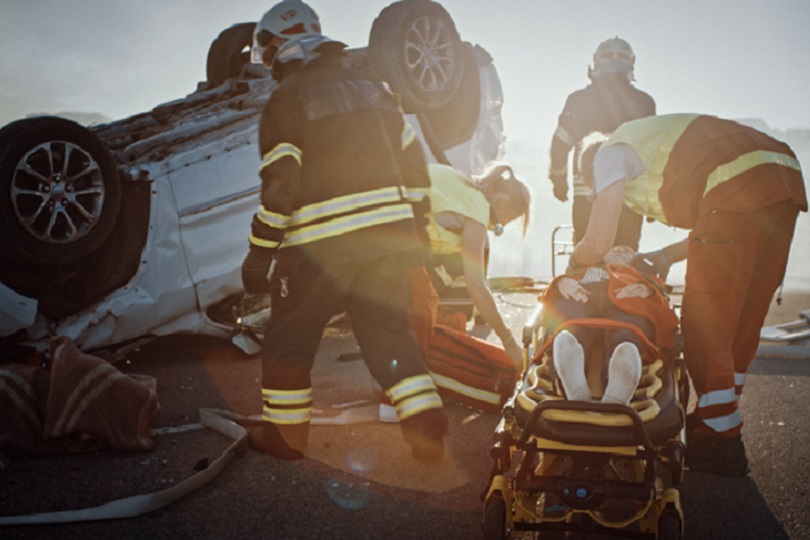Safety Coach
Rollover Prevention
Safety leaders can steer employees away from the relatively common occurrence of rollover crashes by providing education and training. Unsure where to start? Let us help.
Join us for free online training from 10 to 10:45 a.m. Wednesday, Oct. 6. John Counts, a retired Texas Department of Public Safety senior trooper, who now works as a safety consultant, will discuss how rollovers happen, why they happen and what you can do to avoid them. Register to attend now: Rollover Prevention.
Then, apply what you learn and offer safety tips to prevent rollovers of all kinds, including those involving passenger vehicles, pickup trucks, light trucks (utility vehicles and vans) and large trucks:
- Drive distraction-free.
- Slow down and take corners carefully.
- Be sure to log vehicle maintenance, and check brakes and tires regularly.
- Understand the design and performance of your vehicle (shocks and struts play a big role in stability).
- Pack sensibly: Do not overload a vehicle, and make sure loads are tied down properly to prevent vehicle-handling issues that result from weight shifting or sliding.
- Avoid fatigue: Drowsy driving is similar to driving under the influence of alcohol. Adults need seven to nine hours of sleep to reach peak performance levels. You always want to be at your best behind the wheel.
- Never drive after drinking or using other drugs. Impairment affects judgment and reflexes. Consult with a doctor or pharmacist about whether it’s safe to drive after taking prescription medications.
Rollovers happen every day. According to 2019 data from the National Highway Traffic Safety Administration:
- 12.1% of all fatal large-truck crashes involved a rollover
- 20.4% of people killed in passenger cars were involved in a rollover
- 38.1% of people killed in pickup trucks were involved in a rollover
Employers absorb the brunt of costs associated with crashes, whether they occur on or off the job, and whether they involve employees or their family members. Here are three more ways you can work to reduce risk and liability exposure:
- Use this Commercial Driver’s License combination vehicle practice test to help train new hires or as a way to refresh your large-truck drivers on safety risks.
- Explain how electronic stability control works. MyCarDoesWhat, a program of the National Safety Council, provides free resources, including this Quick Guide video.
- Print and display this vintage safety poster: You’re a Pro! Other Drivers Are Influenced by Your Driving!
Last year, according to the Texas Department of Transportation, there were 19,528 crashes involving improper turns, including those involving wide turns and cutting corners. That’s more than 53 crashes every day in Texas alone. Improper turns create safety risks and can result in rollovers.
Steer your employees away from risk. Point them on a path toward safety with education and training.

Tailgate Talk
Solid Foundation
When you incorporate driver and transportation safety in the workplace and encourage employees to bring that information home, you’re letting them know safety is more than just a few words written down in a manual.
You’re demonstrating how much you care about their wellbeing, both at work and at home.
This is a good time of year to drive home that point again. Children are back in school. The roads are more crowded and foot traffic is more prevalent, particularly during the hours before school starts and after the final bell rings. Commuters and employees who regularly drive on the job (delivery truck drivers, farmers, emergency responders, construction workers, etc.) need to be extra vigilant during these high-volume traffic flow periods.
In fact, at some point, almost all road users are going to encounter schools buses, pedestrians and bicyclists. One way to help reduce risk is to share safety tips on your bulletin board, in an email blast or via your intranet:
- Drive distraction-free: This means silencing your phone and being on the lookout for children walking or bicycling to school.
- Slow down: Kids congregate at bus stops and could dart into the street without looking for traffic.
- Don’t rely solely on backup camera technology, because visibility can be distorted by water droplets or blocked by dirt on lenses. Turn your head and back slowly out of your driveway or garage, keeping an eye out for pedestrians and bicyclists.
- Know what school bus flashing lights mean: Yellow means the bus is preparing to stop, and red means the bus is stopped, kids are getting on or off, and all motorists must stop.
Use these free resources on our Safety Huddle webpage to deliver a ready-made safety talk:
Or, print and display these free vintage safety posters:
Let your employees know how much you care. Make driver and transportation safety part of the foundation of everything you do.

